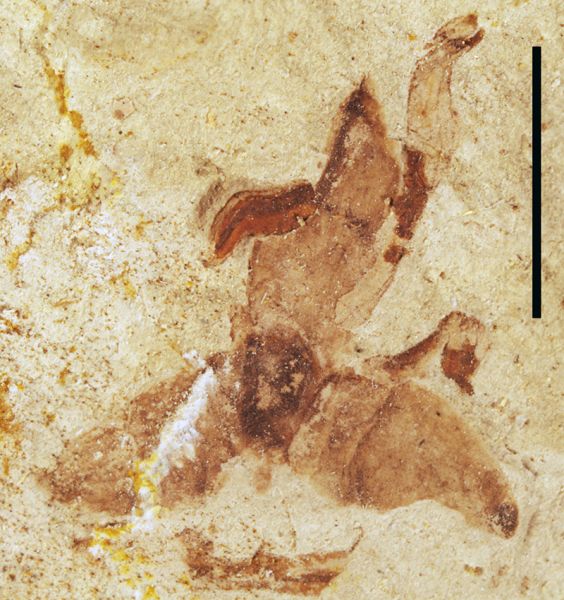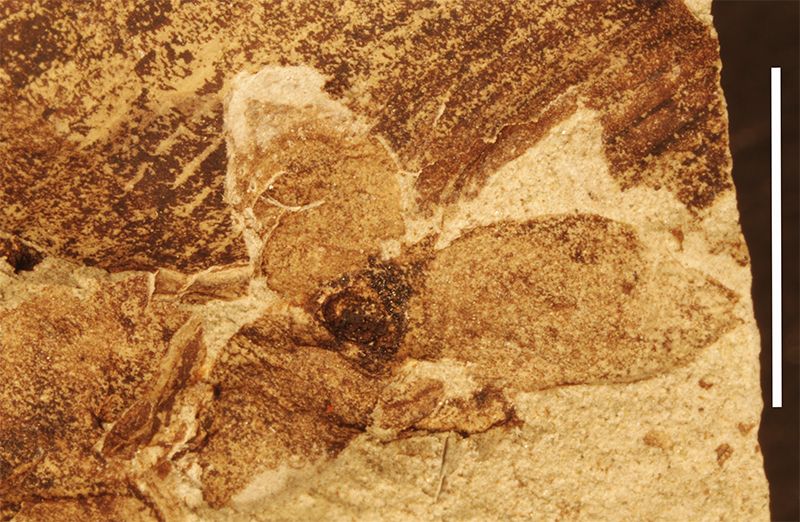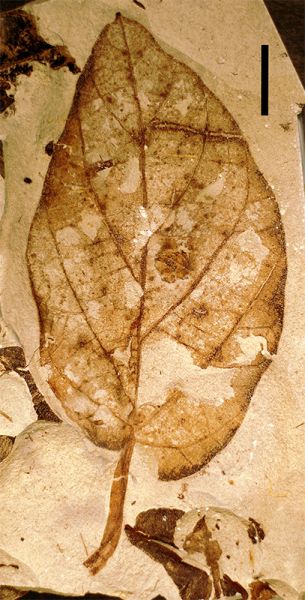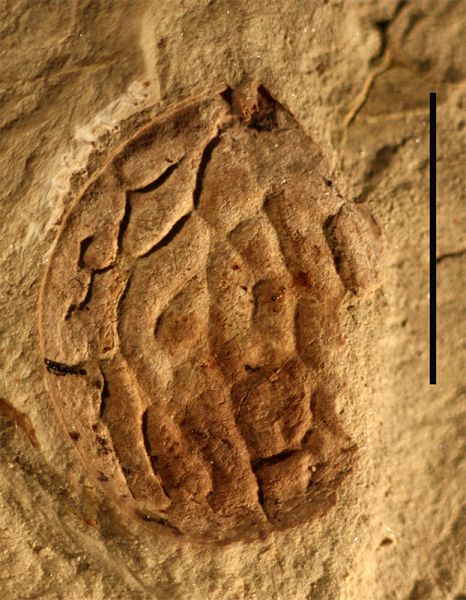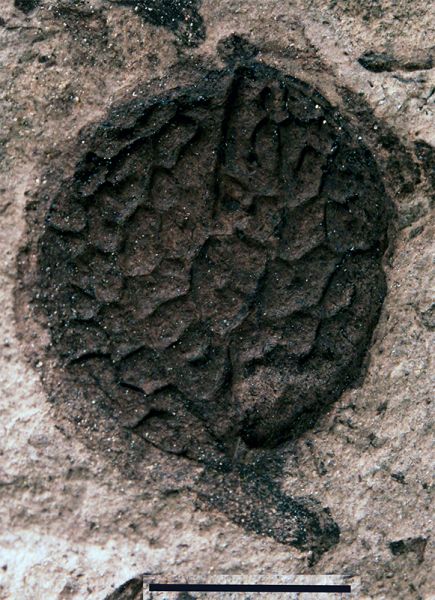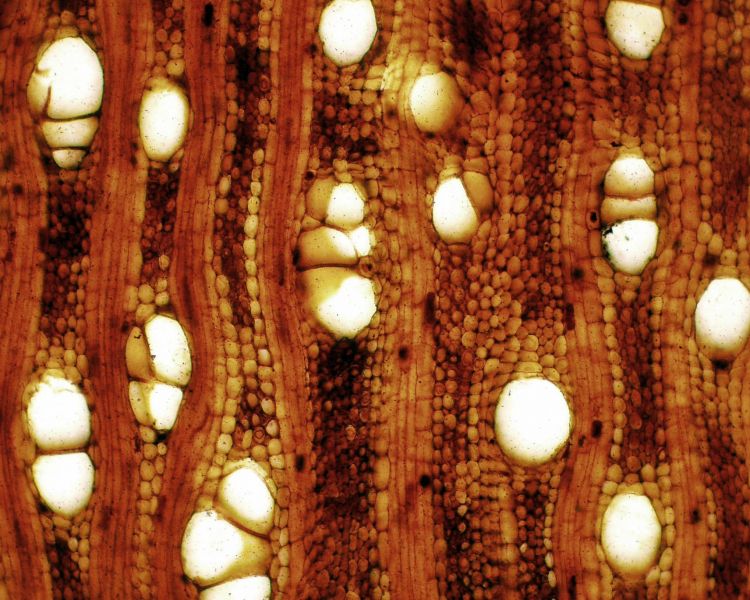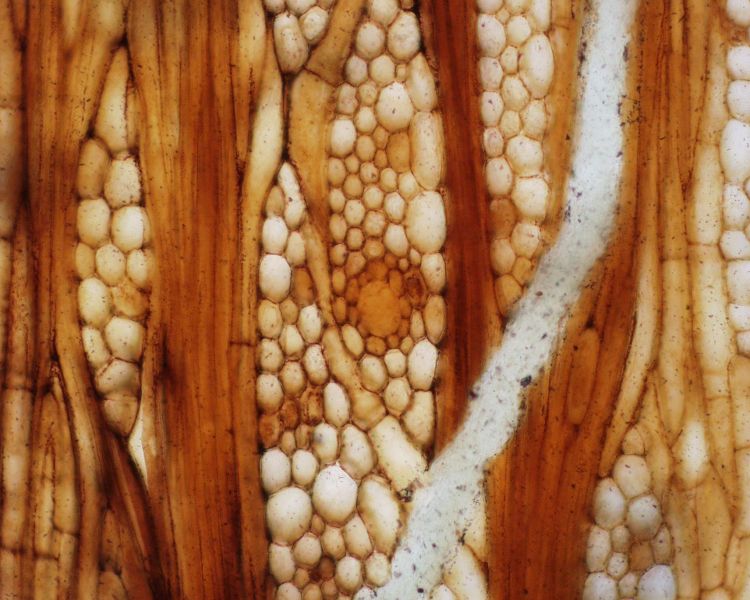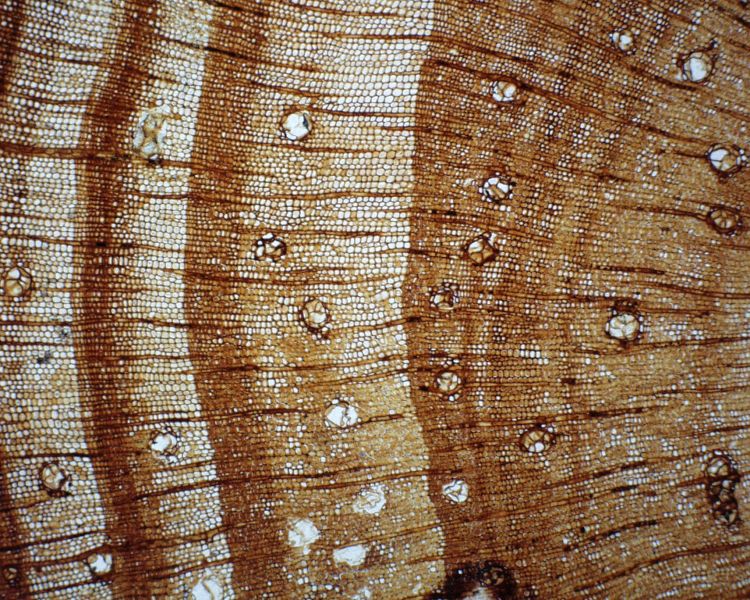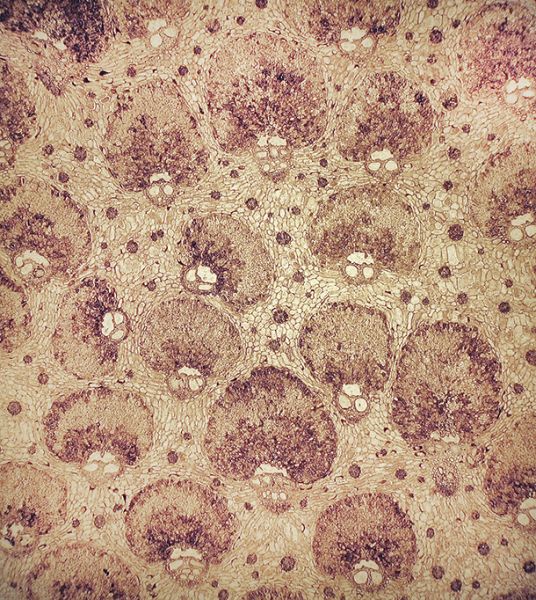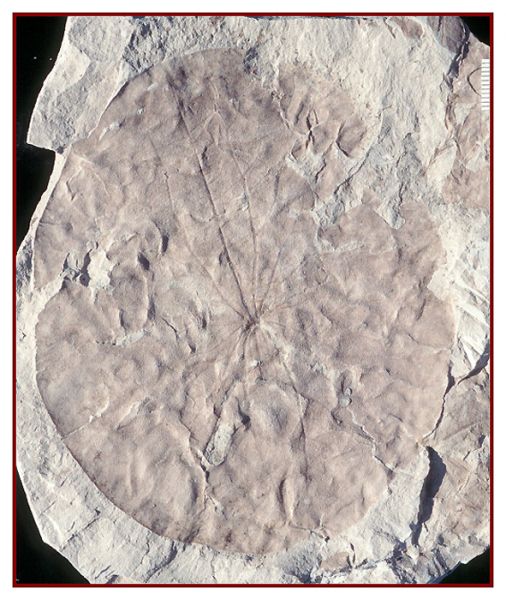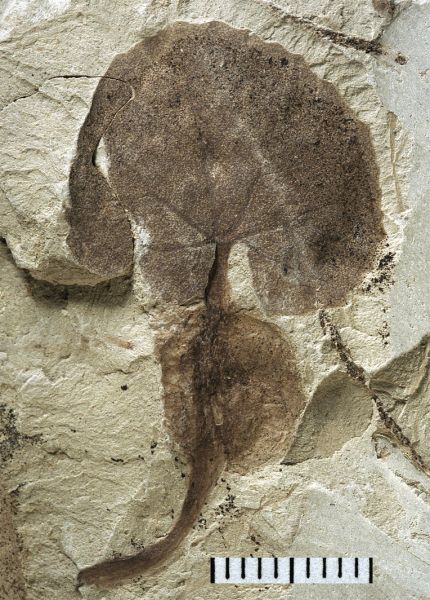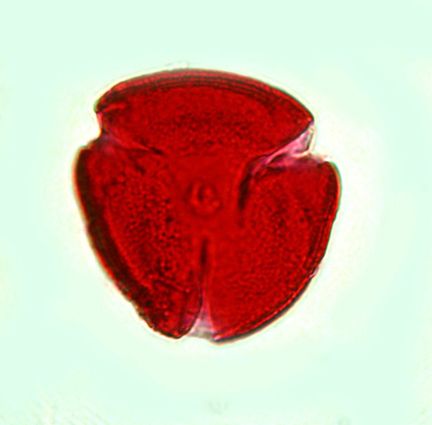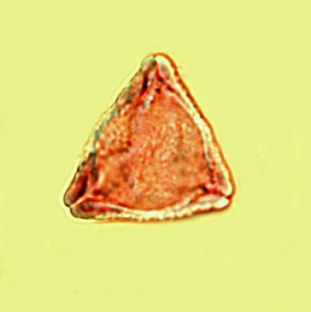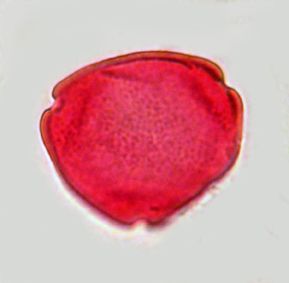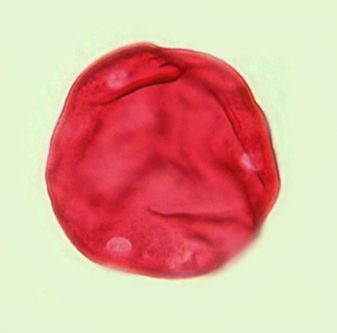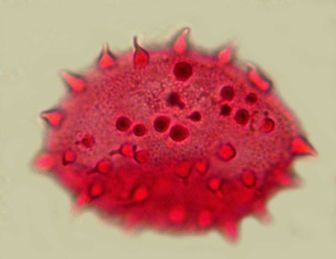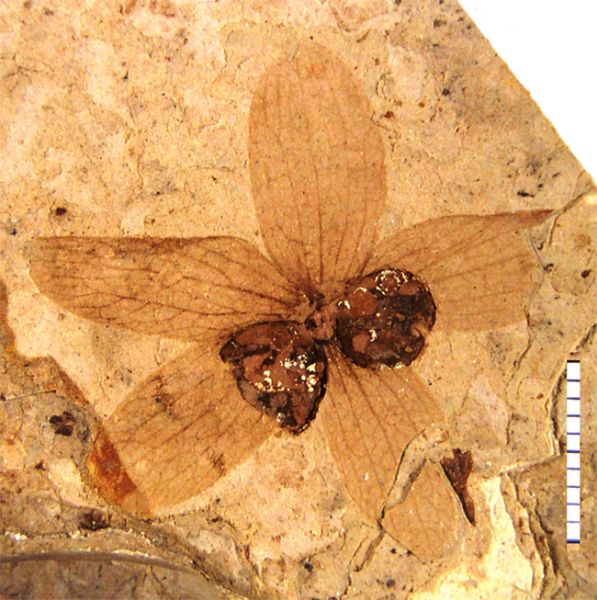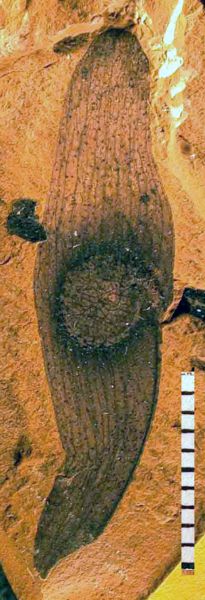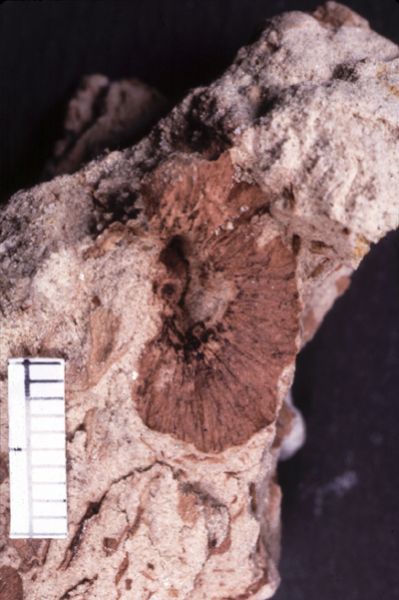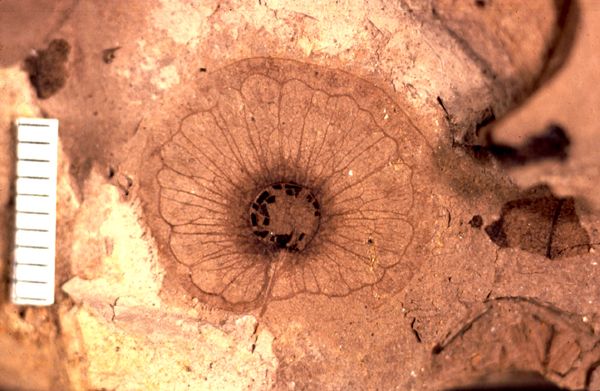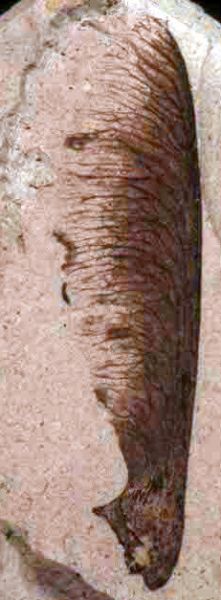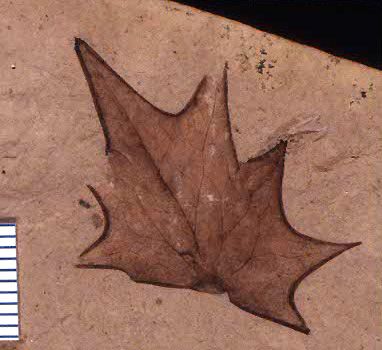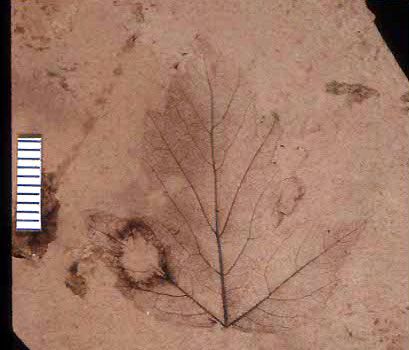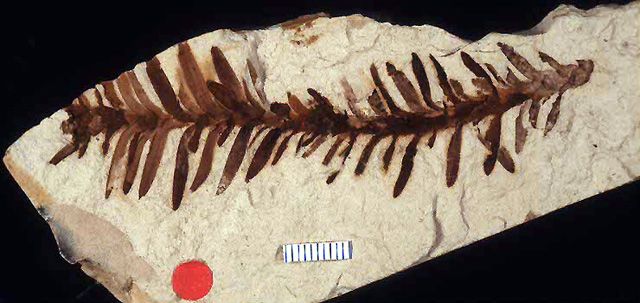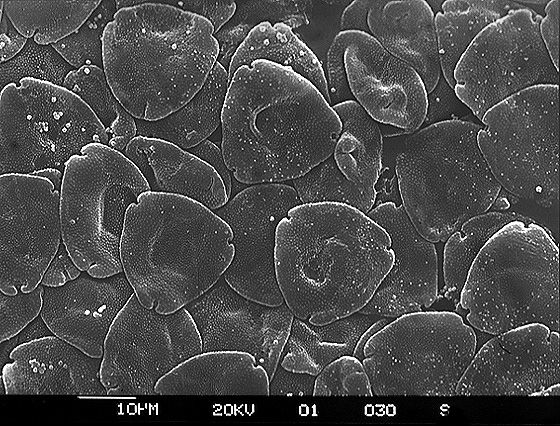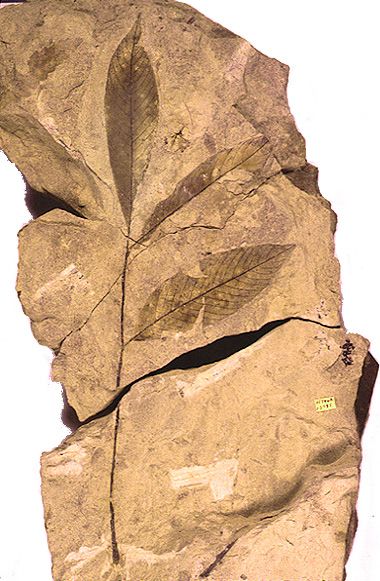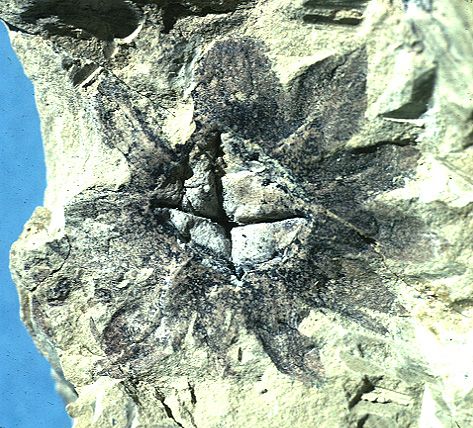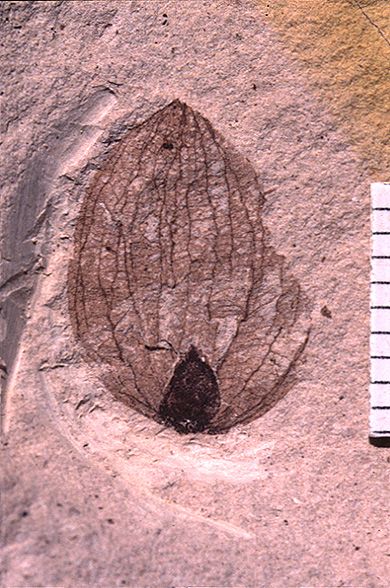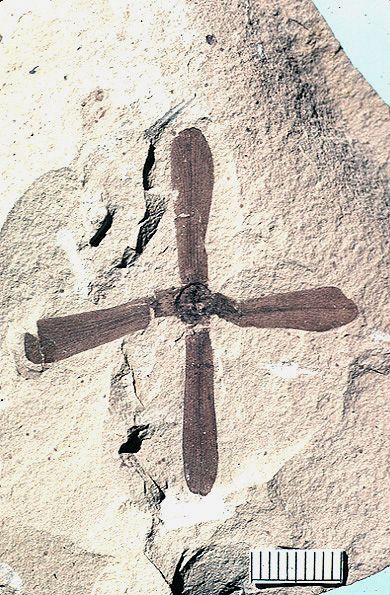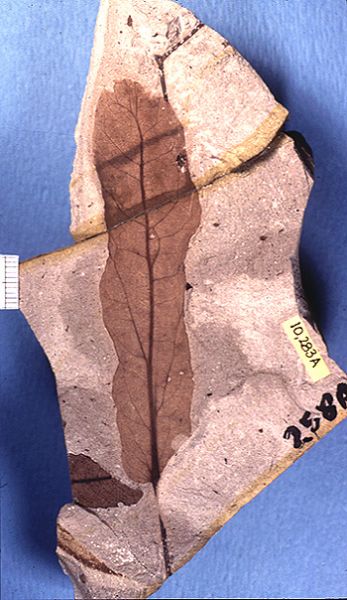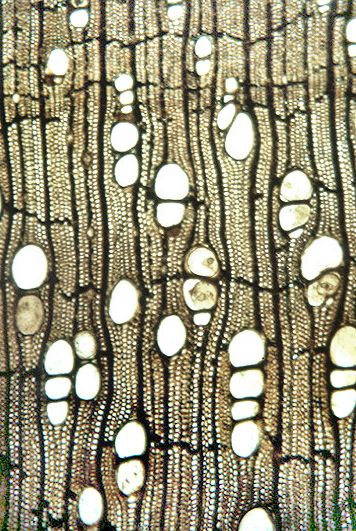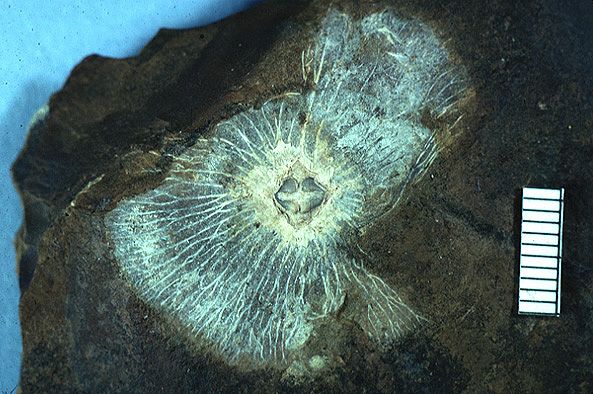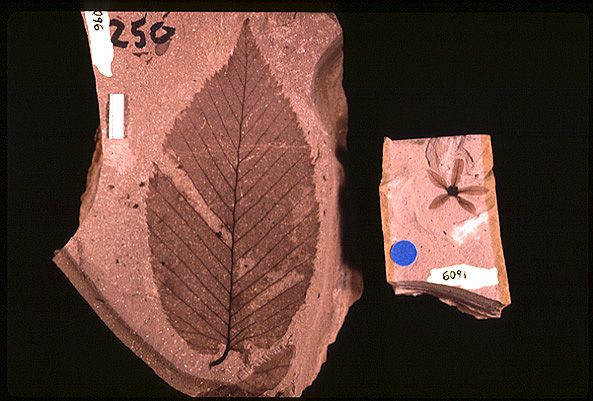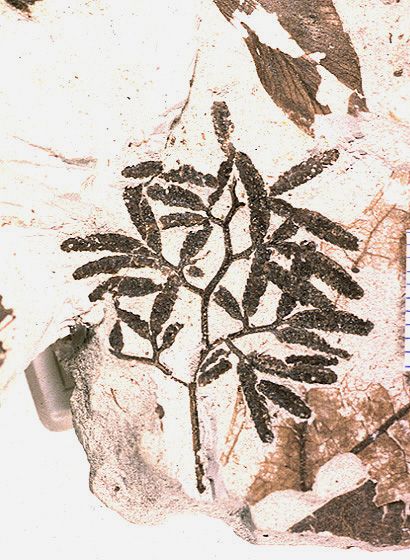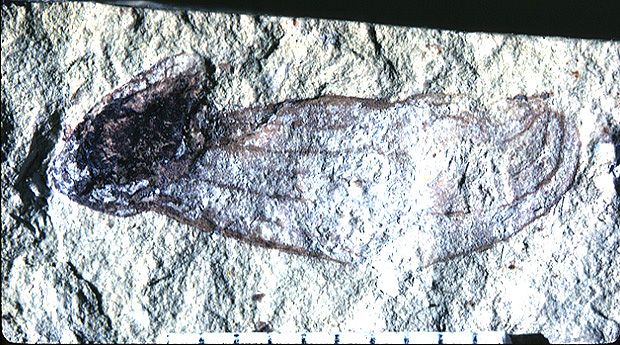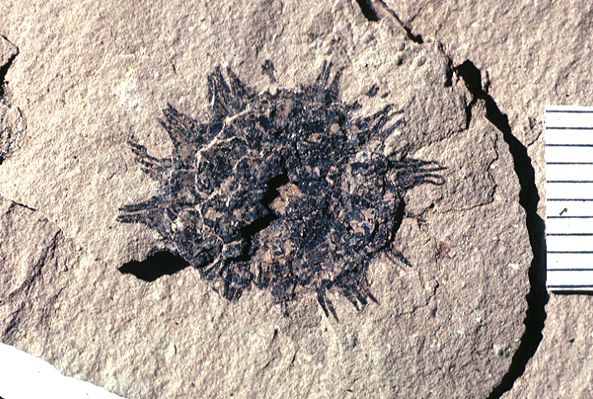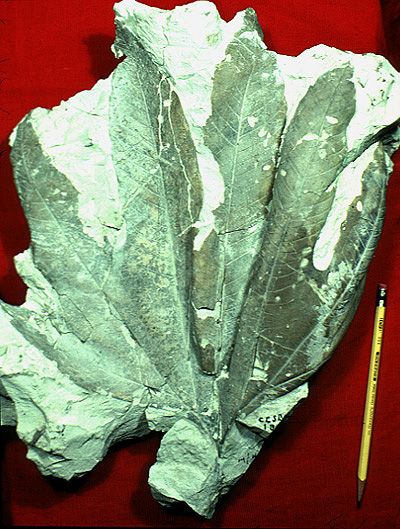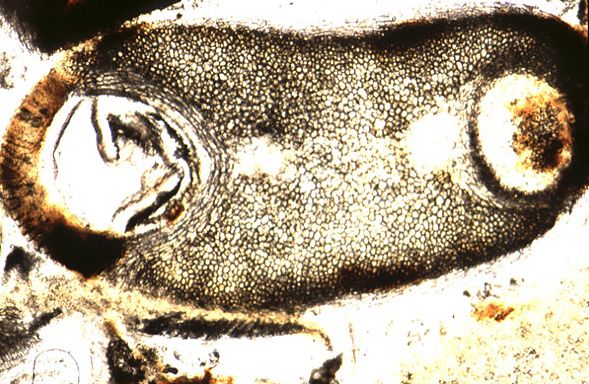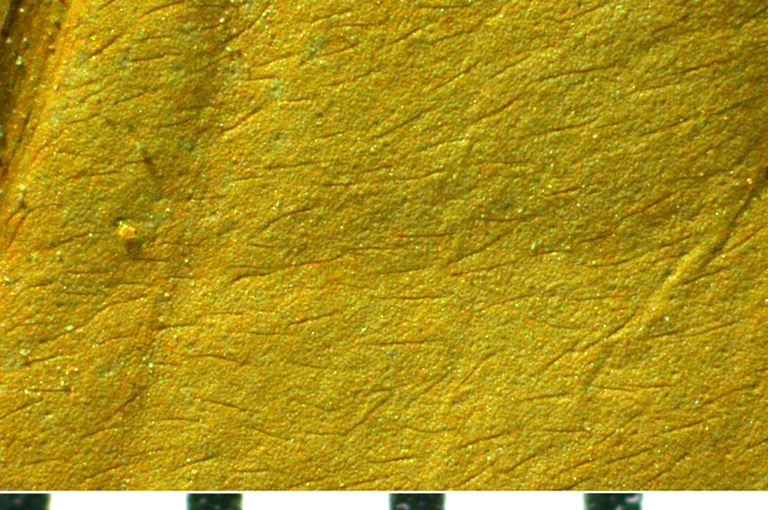
Cornus swingii Manchester, Xiang, Kodrul and Akhmetiev, Holotype from Horse Creek, Montana, UF 18969-38375. Detail of leaf impression surface with well-preserved outlines of the trichomes. Manchester, S.R., Q. Xiang, T. M. Kodrul and M. A. Akhmetiev. 2009. Leaves of Cornus (Cornaceae) from the Paleocene of North America and Asia Confirmed by Trichome Characters. International Journal of Plant Sciences, 170 (1): 132–142. Fig. 2J.

Cornus swingii Manchester, Xiang, Kodrul and Akhmetiev, Holotype from Horse Creek, Montana, UF 18969-38375. An overall view of the leaf with nearly complete lamina and petiole. Manchester, S.R., Q. Xiang, T. M. Kodrul and M. A. Akhmetiev. 2009. Leaves of Cornus (Cornaceae) from the Paleocene of North America and Asia Confirmed by Trichome Characters. International Journal of Plant Sciences, 170 (1): 132–142. Fig. 2I.
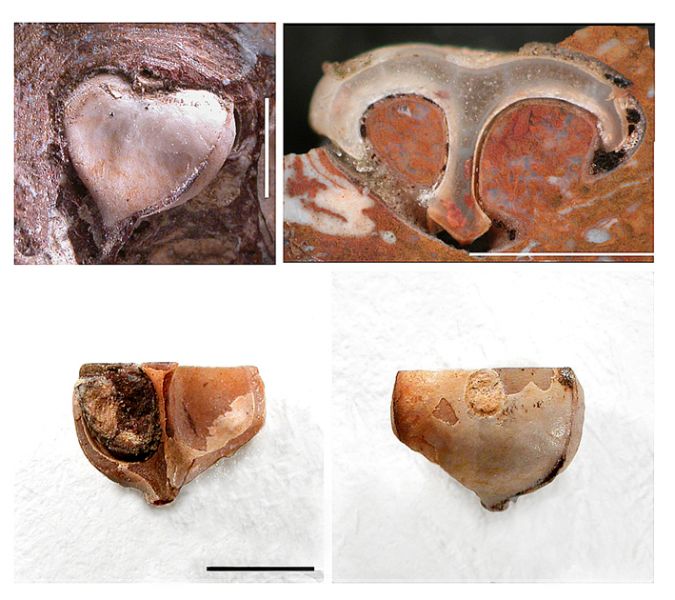
Vitaceae (Grape family): Ampelocissus parvisemina Chen and Manchester from the Paleocene of Beicegal Creek, North Dakota, UF 18972–34705, Holotype Scale bar = 2 mm, as discovered still in matrix (upper left), in transverse section (upper right), and extricated from matrix, viewed ventrally (lower left) and dorsally (lower right). Figure 8, Chen and Manchester 2007.
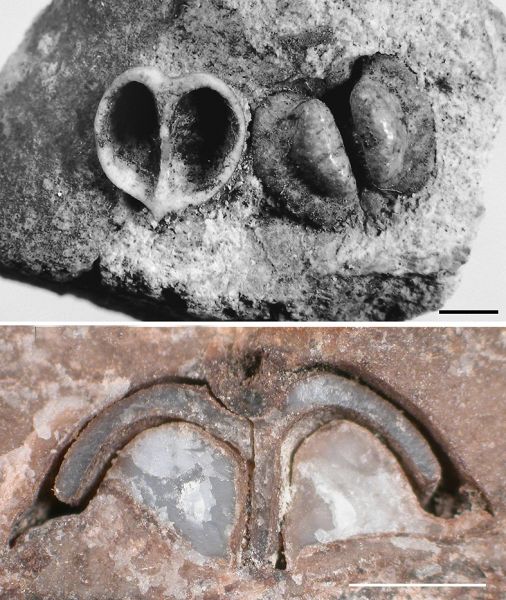
Vitaceae (Grape family): Ampelocissus auriforma Manchester from the Middle Eocene Clarno Formation, Oregon. (top: UF 225-6572, holotype, cast and mold of seed Bottom: UF 225-9524, seed in cross section showing large ventral infolds. Clarno Nut Beds, Oregon (Middle Eocene). Figure 8, Chen and Manchester 2007.
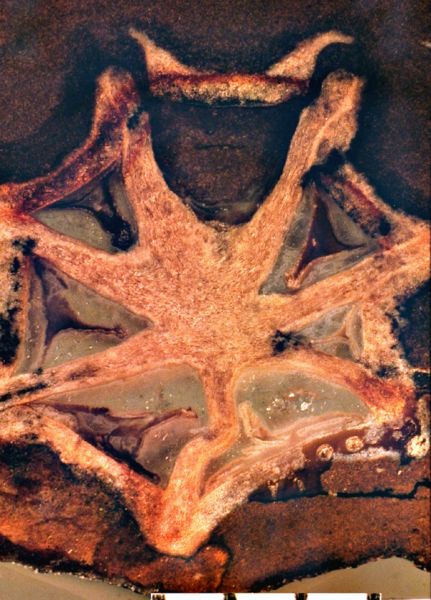
Davidia antiqua (Newb.) Manchester. A transversely sectioned fruit from Almont, North Dakota (UF15722-22285) showing 7 single-seeded locules, the uppermost with its germination valve opened and filled with sediment. Figure 6B in Manchester, S . R. 2002. Leaves and fruits of Davidia (Cornales) from the Paleocene of North America. Systematic Botany 27(2): 368-382.
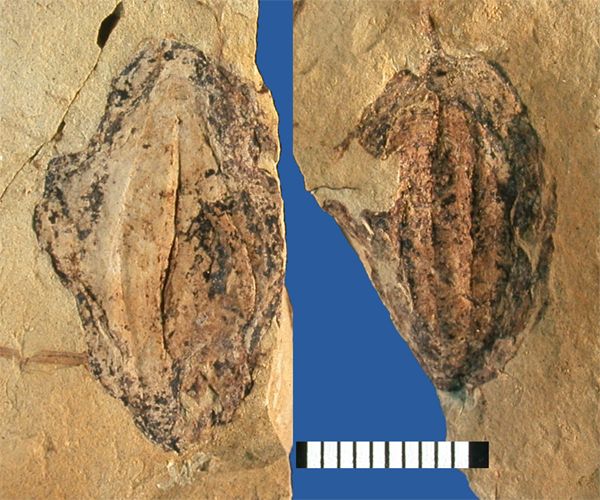
Davidia antiqua (Newb.) Manchester. Left – fruit with a surrounding flange of softer tissue, and an apical style, UF 33593; Right – fruit impression showing longitudinal grooves which represent ridges on the original endocarp, darker part at periphery interpreted as remains of meso- and epicarp, UF 33590′. Figure 4D and 4E in Manchester, S . R. 2002. Leaves and fruits of Davidia (Cornales) from the Paleocene of North America. Systematic Botany 27(2): 368-382.

Davidia antiqua (Newb.) Manchester. Fruit attached laterally to a head with a long peduncle. Little Bitter Creek Road, Wyoming (locality UF 18811), UF 33589. Figure 4C in Manchester, S . R. 2002. Leaves and fruits of Davidia (Cornales) from the Paleocene of North America. Systematic Botany 27(2): 368-382.
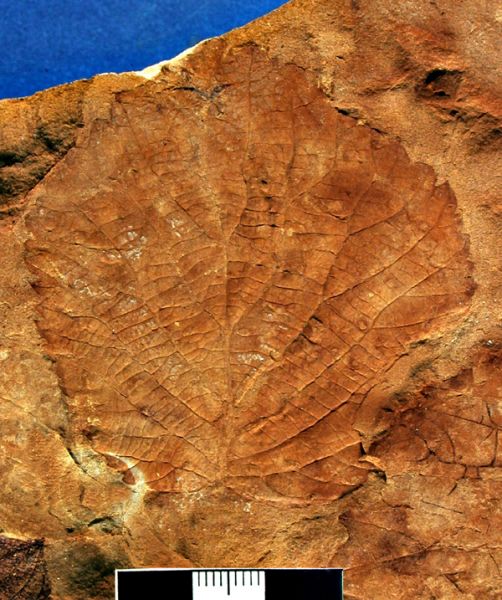
Davidia antiqua (Newb.) Manchester. Leaf impression, showing nearly orbicular shape, cordate base, regularly spaced teeth, successive marginal branches of the lower pairs of secondary veins, and percurrent tertiary veins. Little Bitter Creek Road, Wyoming (locality UF 18811), UF 33588. Figure 4A in Manchester, S . R. 2002. Leaves and fruits of Davidia (Cornales) from the Paleocene of North America. Systematic Botany 27(2): 368-382.
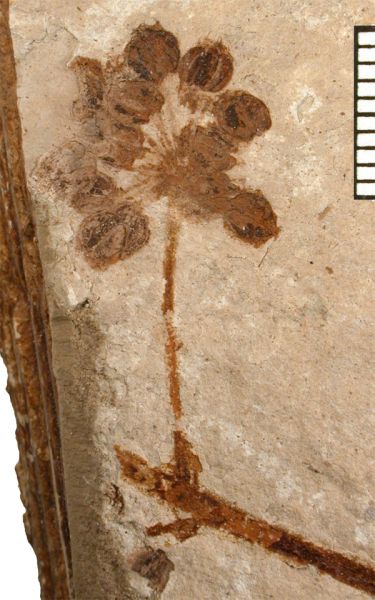
Enlargement of “Araliaceous infructescence of globose heads,” from the late Eocene of Florissant, Colorado: UF 18722-30277. This specimen was collected and donated by George Hecht, and was figured as Plate 3, fig. 3 in Manchester, S.R. 2001. Update on the megafossil flora of Florissant, Colorado. Proceedings of the Denver Museum of Nature & Science, Series 4, Number 1, pp.137-161.
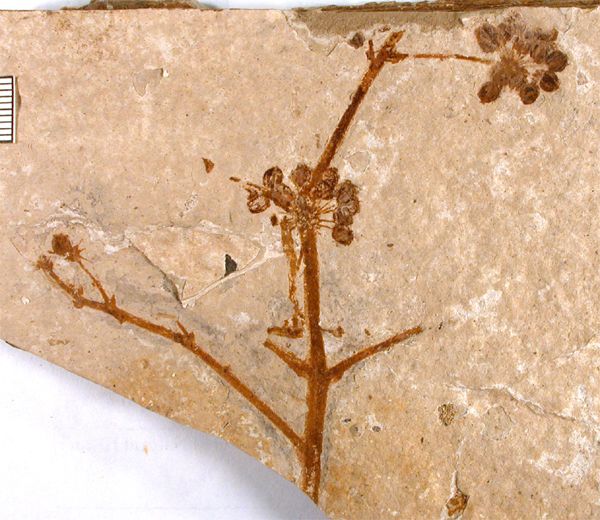
“Araliaceous infructescence of globose heads,” from the late Eocene of Florissant, Colorado: UF 18722-30277. This specimen was collected and donated by George Hecht, and was figured as Plate 3, fig. 3 in Manchester, S.R. 2001. Update on the megafossil flora of Florissant, Colorado. Proceedings of the Denver Museum of Nature & Science, Series 4, Number 1, pp.137-161.
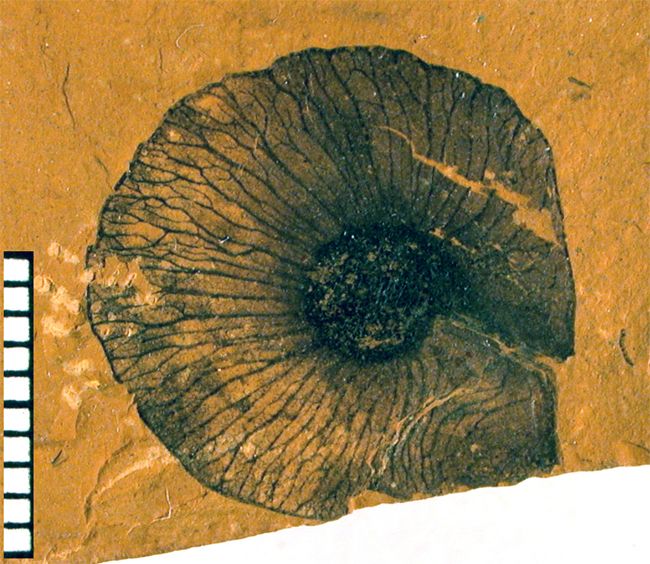
Dipteronia brownii McClain & Manchester. Mericarps from Teater Road, Oregon, UF 00256-20862. Figure 25 in McClain, A.M. & Manchester, S.R. 2001. Dipteronia (Sapindaceae) from the Tertiary of North America and implications for the phytogeographic history of the Aceroideae. American Journal of Botany 88(7):1316-1325.
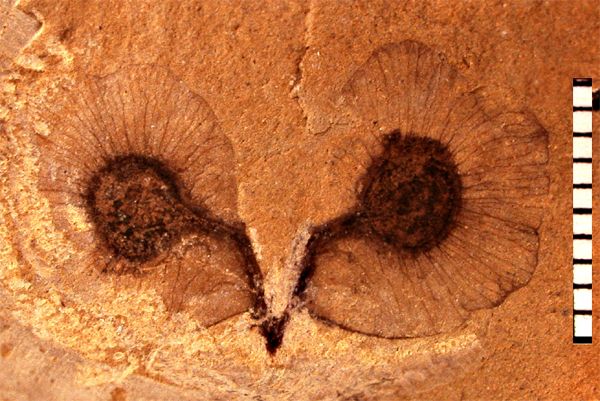
Dipteronia brownii McClain & Manchester. Incompletely detached mericarps from Sumner Spring, Gray Butte, Oregon, UF 00283-31375. Figure 20 in McClain, A.M. & Manchester, S.R. 2001. Dipteronia (Sapindaceae) from the Tertiary of North America and implications for the phytogeographic history of the Aceroideae. American Journal of Botany 88(7):1316-1325.
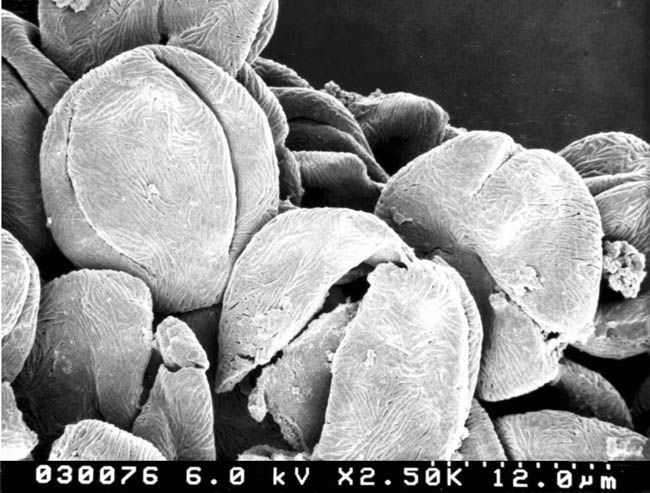
Landeenia aralioides (MacGinitie) Manchester & Hermsen. Pollen from Landeenia stamens. Clump of pollen from flower (UF26703) , showing approximately circular polar and equatorial profiles of the pollen grains. Figure 23 in Manchester, S. R. and E. J. Hermsen. 2000. Flowers, fruits, seeds, and pollen of Landeenia gen. nov., an extinct sapindalean genus from the Eocene of Wyoming. American Journal of Botany 87(12):1909-1914.
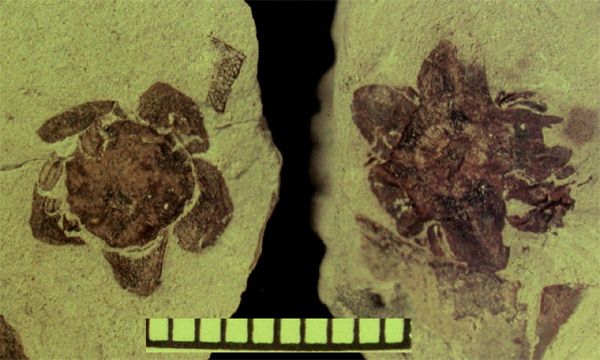
Landeenia aralioides (MacGinitie) Manchester & Hermsen. Flower showing five sepals, rounded gynoecium, and several anthers. UF22592. Figure 15 in Manchester, S. R. and E. J. Hermsen. 2000. Flowers, fruits, seeds, and pollen of Landeenia gen. nov., an extinct sapindalean genus from the Eocene of Wyoming. American Journal of Botany 87(12):1909-1914.
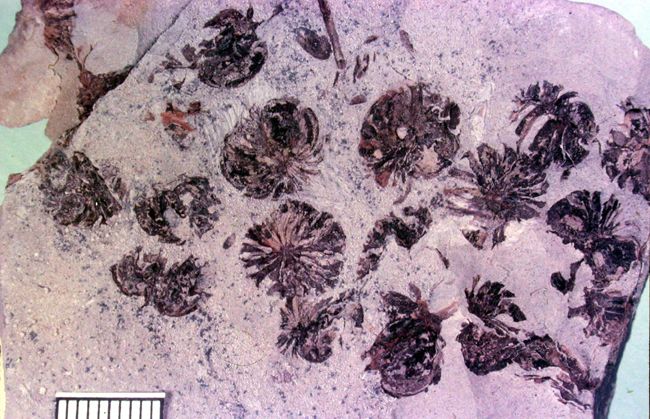
Landeenia aralioides (MacGinitie) Manchester & Hermsen. Scattering of fruits preserved in various orientations, UF22618. Figure 3 in Manchester, S. R. and E. J. Hermsen. 2000. Flowers, fruits, seeds, and pollen of Landeenia gen. nov., an extinct sapindalean genus from the Eocene of Wyoming. American Journal of Botany 87(12):1909-1914.
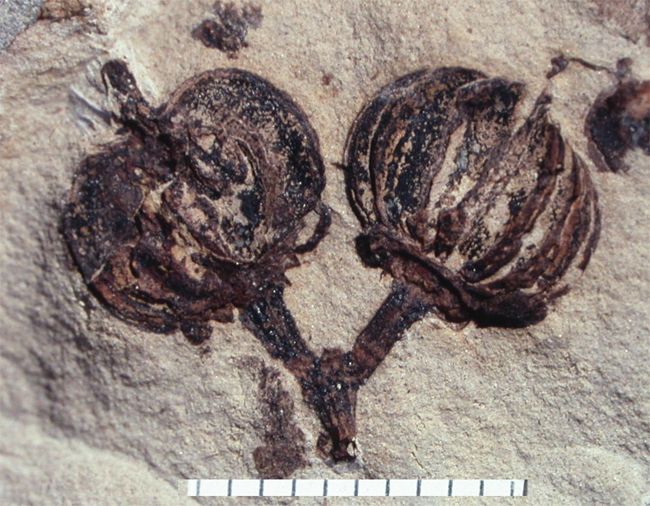
Landeenia aralioides (MacGinitie) Manchester & Hermsen. Cyme of two fruits (most likely incomplete), showing calyx remnants and protruding style, UF22626. Figure 6 in Manchester, S. R. and E. J. Hermsen. 2000. Flowers, fruits, seeds, and pollen of Landeenia gen. nov., an extinct sapindalean genus from the Eocene of Wyoming. American Journal of Botany 87(12):1909-1914.
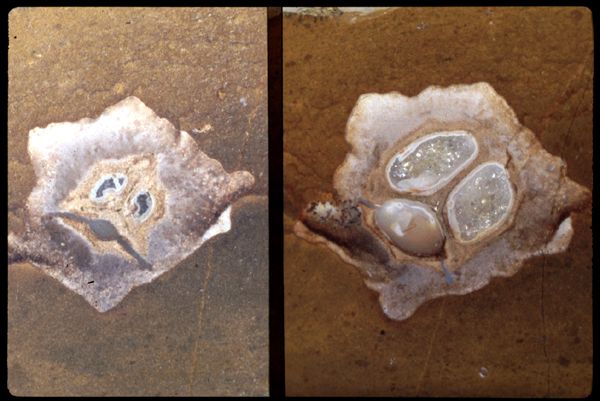
Amersinia obtrullata Manchester, Crane & Golovneva fruit from the Paleocene of Almont, North Dakota. Figure 4.29 and 4.30 in Manchester, S.R., P.R. Crane & L.B. Golovneva, 1999. An extinct genus with affinities to extant Davidia and Camptotheca (Cornales) from the Paleocene of North America and eastern Asia. International Journal of Plant Science 160(1):188-207.
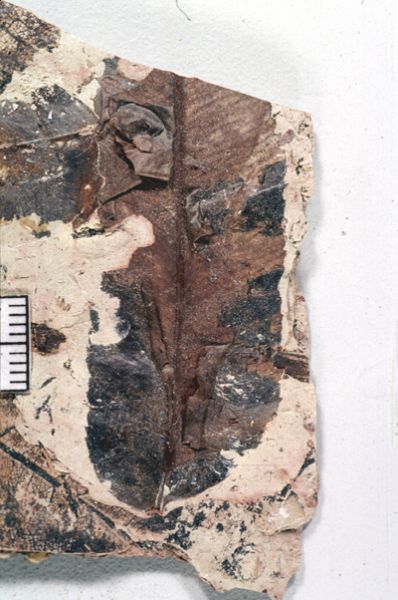
Eostangeria pseudopteris Kvacek & Manchester. Leaflet with cuticle. HOLOTYPE from the Paleocene of Little Bitter Creek, Wyoming. Figure 1A in Kvacek, Z. & S.R. Manchester, 1999. Eostangeria Barthel (Extinct Cycadales) from the Paleogene of Wester North America and Europe. International Journal of Plant Science 160(3):621-629.
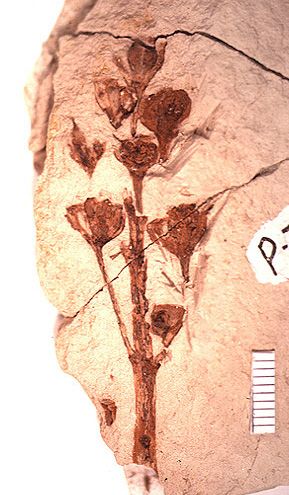
Infructescence of Trochodendron sp. Figure 29 in Manchester, S.R., P.R. Crane and D.L. Dilcher 1991. Nordenskioldia and Trochodendron (Trochodendraceae) from the Miocene of northwestern North America. Botanical Gazatte 152:357-368. Correction: this is from Emerald Creek (UIMM loc P37)–Not Clarkia as stated in the figure caption.

Twig showing attached leaves and winged fruits of Cedrelospermum. Figure 2 in Manchester, S.R. 1989. Attached reproductive and vegetative remains of the extinct American-European genus Cedrelospermum (Ulmaceae) from the Early Tertiary of Utah and Colorado. American Journal of Botany 76:256-276. Correction: The correct citation of this is Cedrelospermum nervosum (Newberry) Manchester, not C. nervosum (Cockerell) Manchester as indicated in the figure caption. (This is also figure 12.6A in Manchester 1989, systematics and fossil history of the Ulmaceae).
